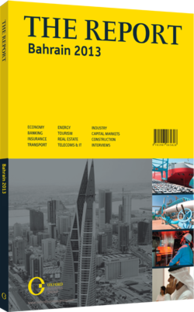All aboard: Efforts to energise the sector through cruise ship tourism gain traction
As part of its efforts to relaunch its tourism industry and differentiate itself from other Gulf destinations, Bahrain is looking to move into the lucrative cruise ship market. As many other small island nations have found, the cruise industry offers several advantages. First, it tends to attract customers from the higher end of the income spectrum, precisely the ideal demographic for a country focusing on family-oriented tourism. Secondly, cruise tourism helps to avoid head-to-head competition with neighbouring countries, since cruises tend to call at several destinations (often a key part of their appeal). Thirdly, it offers an opportunity for marketing through that tried and tested method, word of mouth.
BACKGROUND: Given the hot, humid summers of the Gulf, the cruise season begins in October and winds down the following April. During 2011-12, the last season for which complete figures are available, the country saw a record number of visitor arrivals by cruise ship. The unrest of early 2011 caused many people to stay away, with 29 of the scheduled 50 port calls taking place during the 2010-11 season.
Now, however, the industry appears to have rebounded. Although ships docking are recorded on an annual basis, and thus 2011 and 2012 register the same number of ships calling at Khalifa Bin Salman Port (KBSP) – 23 – in terms of visitor numbers, the country registered around 40,000 during the 2011-12 season, and for the 2012-13 season some 70,000 travellers are expected to visit.
Operators that currently stop off at Bahrain include Germany’s TUI Cruises and Norway’s Fred Olsen. In order to keep visitors coming, KBSP has offered reduced port fees and deep discounts of up to 35% on the $8 per-passenger landing fee applied by APM Terminals, the port operator at KBSP. This is aimed at offsetting the cost of increased insurance premiums for landing on the island. The straightforward Customs and visa procedures in Bahrain are an additional incentive for cruise operators as well.
HERITAGE: Part of the appeal of Bahrain as a drop-off point is the contrast it offers to the larger cities of the lower Gulf. The only island country in the GCC, Bahrain has a strong historical past, and certainly some of its best-preserved remains.
The kingdom features two Portuguese forts (one of which, Bahrain Fort, is a World Heritage Site), temple remains and several museums, including the National Museum and Beit Al Quran. While the island is too small to contain the mountains or vast sand dunes found in other parts of Arabia, the lush date groves of the northern third of the island make for an interesting contrast to the southern area of its territory, which is largely desert. Indeed, one popular destination in the south is the “Tree of Life”, a revered tree in the middle of the desert said to have been growing on the same spot for about 400 years.
In terms of shopping, Bahrain is home to at least two souks, on the island of Muharraq and at the Bab Al Bahrain in Manama, the traditional commercial centre of the whole country, in addition to several modern air-conditioned shopping malls.
Cruise tourism is also significant business for the Bahrain International Circuit, the nation’s Formula One track, which can receive up to 2000 visitors a day when a cruise ship is in town. Indeed, according to estimates from Seatrade, a leading industry publication, a single cruise ship can put anywhere up to $275,000 into the local economy.
FUTURE: The significant numbers recorded are a sign of increasing confidence among international tourism operators in the kingdom. Moreover, with Dubai attracting 100 calls and 400,000 passengers in 2012, and Abu Dhabi planning for 300 calls a year and up to 600,000 visitors by 2030, there is considerable potential for Bahrain to cooperate with its Gulf neighbours. While incentives and discounts are likely to remain useful over the immediate term, this segment of the tourist sector also looks likely to experience continued growth in the 2012-13 season.
You have reached the limit of premium articles you can view for free.
Choose from the options below to purchase print or digital editions of our Reports. You can also purchase a website subscription giving you unlimited access to all of our Reports online for 12 months.
If you have already purchased this Report or have a website subscription, please login to continue.

